April 28-May 12, 2008
Note: Click on photos for larger picture
Summary: It rains over the weekend! New volunteers are showing up and we get to put off watering for another week.
On Monday I spent a final day editing the Bioregionalismo booklet. Jaime went with Sam to the greenhouse and they planted more Pechiche seeds, transplanted more Jaboncillo, Pechiche and Cabo de H seedlings, prepared another couple seed beds for planting and did some general tidying up.
Tuesday I printed and made copies of the booklet, ready for Bioregional Education class on Wednesday. In the afternoon I took a trip to Rocafuerte to track down some of the previous landowner documents pertaining to Planet Drum’s land.
Sam and Jaime headed to El Nuevo Globo to cut more stakes for identification. Unfortunately Sam’s asthma reacted to the trees they were cutting and they returned early. A new volunteer Mike showed up.
On Wednesday we went back in the greenhouse. More seed beds were prepared and baby Guachepeli trees collected from nearby were transplanted into 3-liter bottles. We’ll care for them in the greenhouse during the dry season and plant them in the field next year.

The seed bed planted the previous Friday with Algarrobo seeds is germinating already, and in force! Thanks to Flor Maria Duenas for the tip: soaking the seeds (in their pods) for 3 days before planting them in the bed. We had some difficulties the previous year getting Algarrobo seeds to germinate. More bottles for transplanting were also prepared.

On Thursday we stopped by the greenhouse to pick up 16 trees left over from this year’s planting (Ceibos and Guarangos) and took them to the site at Don Pepe’s. We replaced a few of the trees which died (mostly Algarrobos – we had a bad batch, they were infected with bugs, ants, or had poorly mixed soil, the exact cause is unknown) and also filled a few holes which were never planted earlier in the season. While there, we also cleared weeds off of the trees planted in late January. Overall the site is in great shape so far. The recent rains over the past weekend were incredible for the trees and will really help to keep soil moisture up for the next dry spell.
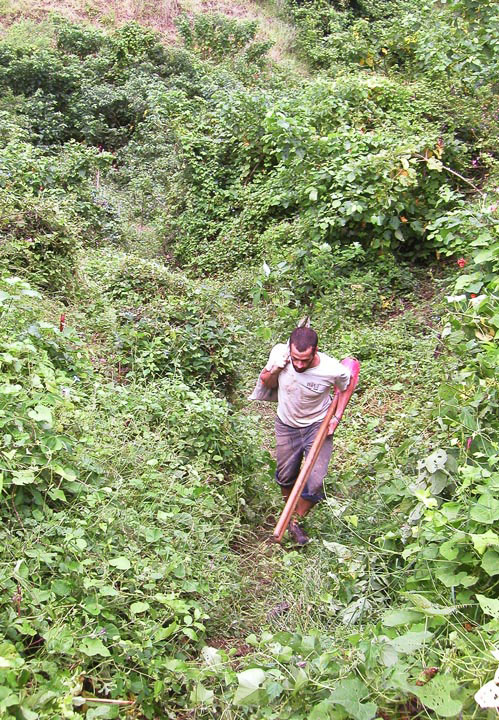
Mike carries tools up the hill at the Don Pepe revegetation site.
In the afternoon another volunteer, Cameron arrived. Friday was a day off because President Correa declared a long weekend in observance of Labor Day. And on Sunday, Fuki, a volunteer from Japan joined us, straight from a previous volunteering stint in Guatemala.
The week started off by harvesting more stakes for identifying trees at the revegetation sites. We’re going to need close to 2,000 for all of the trees planted this year. In the afternoon Jaime led the volunteers in a painting session and the freshly chopped stakes got their signature red tip painted.
I made a field trip to Portoviejo to meet with the Director of the Ministry of the Environment for the province of Manabí, and also to investigate a lead in the Planet Drum land access saga. I spent the morning chatting with the Director about NGO status and various projects that are taking place in Manabí. He complained about a shortage of operational resources, lack of enforcement of environmental laws, deforestation, and how tourism often trumps environmentalism at national parks. The entire Department of the Environment occupies a single floor in the building of the ministry of Agriculture.
I talked to the lawyer who will be reviewing our documents for the possibility of receiving official recognition as an NGO. Although it is likely that we will receive approval at this stage, this particular government branch is not the final approving body for registering NGO’s and foundations, but their backing will be helpful for us to continue the process. Waiting for the new constitution to be written and approved may still be necessary before we can be recognized.
I also met with a lawyer for the Center of Public Works in Manabi. She deals with land sales, roadways, and other projects. She explained to me that it may be possible to use a particular article of the law to ask for a free land inspection from the government to determine if one’s land is in fact isolated from public roads. An inspection crew then determines a fair price based on the current value of land to pay to a neighbor in order to appropriate a portion of their land to build an access road. If we choose to follow this lead and our land gets inspected, she will be on the crew to pay a visit to our land.
Although nothing definitive was established, after a day of taxis back and forth across Portoviejo and various government lawyers, I feel that some progress was made.
On Tuesday we watered the Astillero revegetation site. From there we walked back to Bosque en Medio de las Ruinas. Red tipped marking stakes were placed at the trees and weeds were cleared.
Wednesday morning I delivered a batch of fresh, immaculate Bioregionalismobooklets to Ramon who presented them to the new group of Bioregionalistas later in the day. We watered the Reales Tamarindos site and hopped back on the bus to Kilometro 8. At the greenhouse we dumped off compost and headed to the vivero (greenhouse) site to do trail maintenance and clean weeds.
Fresh off the night bus from Quito, new arrival Amber decided to come right out to work! On Thursday we hiked into the El Toro site to do maintenance and stumbled upon a variety of signs of wildlife.

The trees there look good. We cut back weeds to keep the trails clear.
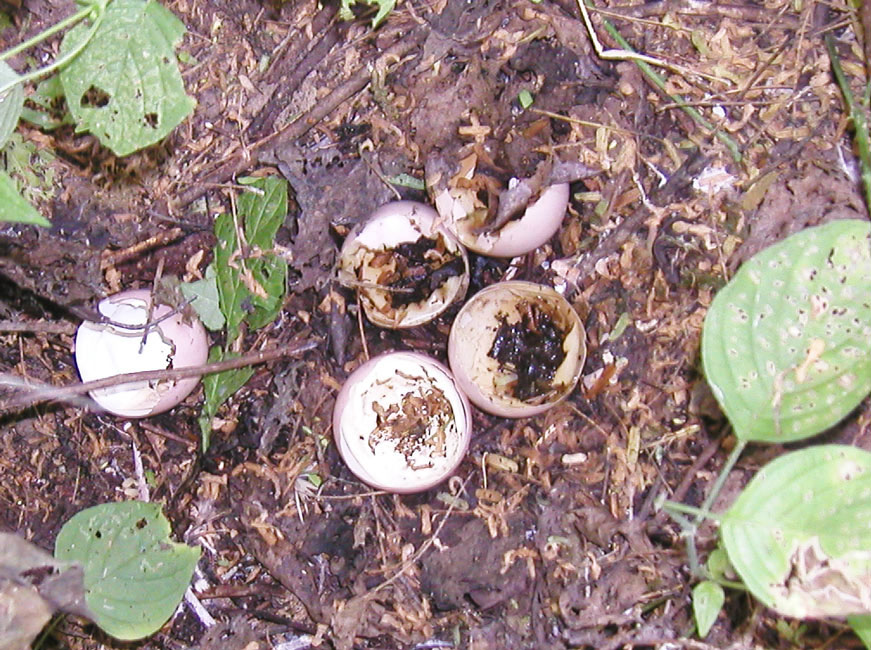
We also transplanted out another batch of baby Guayacans which are growing in the thousands around a large, healthy Guayacan.
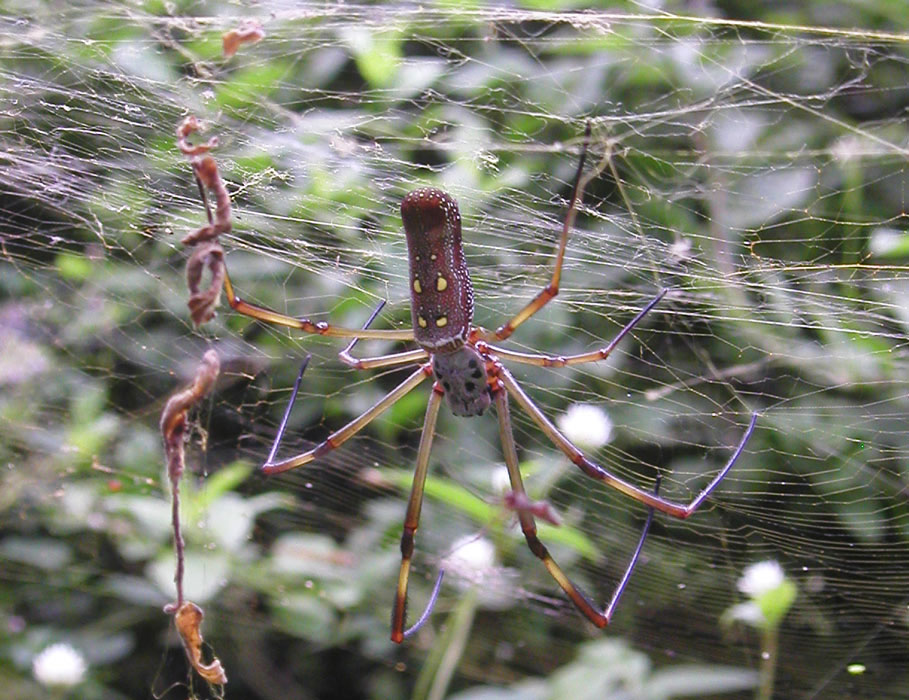
A spider dangles across one of our trails.
Friday we spent the day at the greenhouse. Soil was prepared (1/3 dark dirt, 1/3 compost, and 1/3 sand).
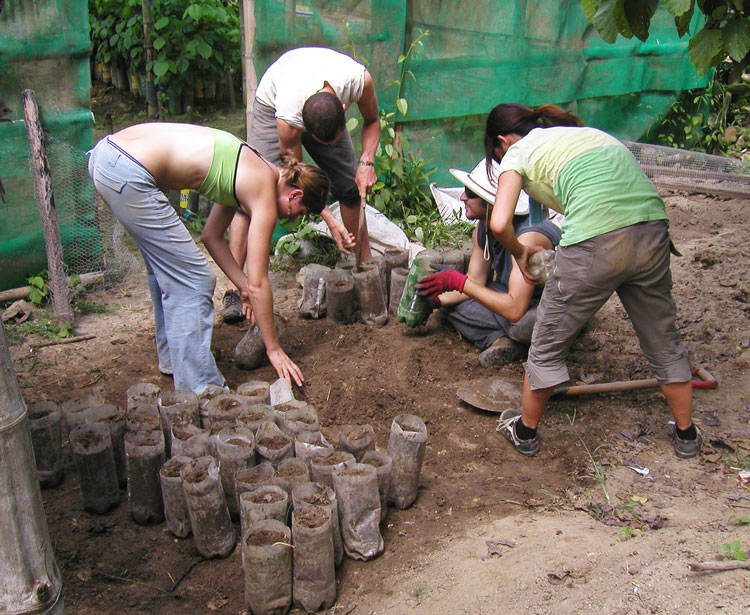
Bottles were cut and filled and the Guayacans we collected the day before were transplanted into them.
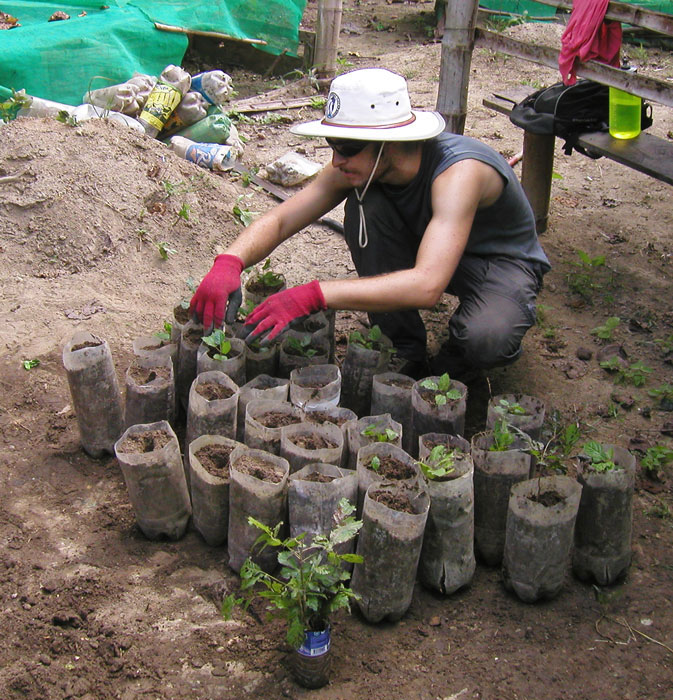
The house compost was dumped off. We also replaced the dead trees (20) at the vivero site in the hills behind the greenhouse. Some of the trees were shuffled around inside the greenhouse to organize it better. It is filling up again already and we will need to move more of the bigger trees to the greenhouse extension soon.
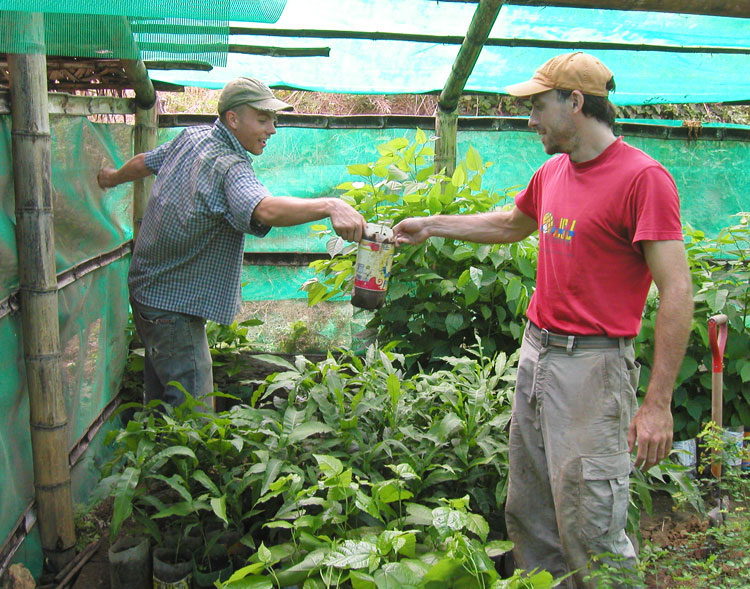
Moving trees in the Vivero (Greenhouse).
Pásalo bien,
Clay

Thanks for sharing. I read many of your blog posts, cool, your blog is very good.
I don’t think the title of your article matches the content lol. Just kidding, mainly because I had some doubts after reading the article.
Your point of view caught my eye and was very interesting. Thanks. I have a question for you. https://accounts.binance.info/en-IN/register-person?ref=UM6SMJM3